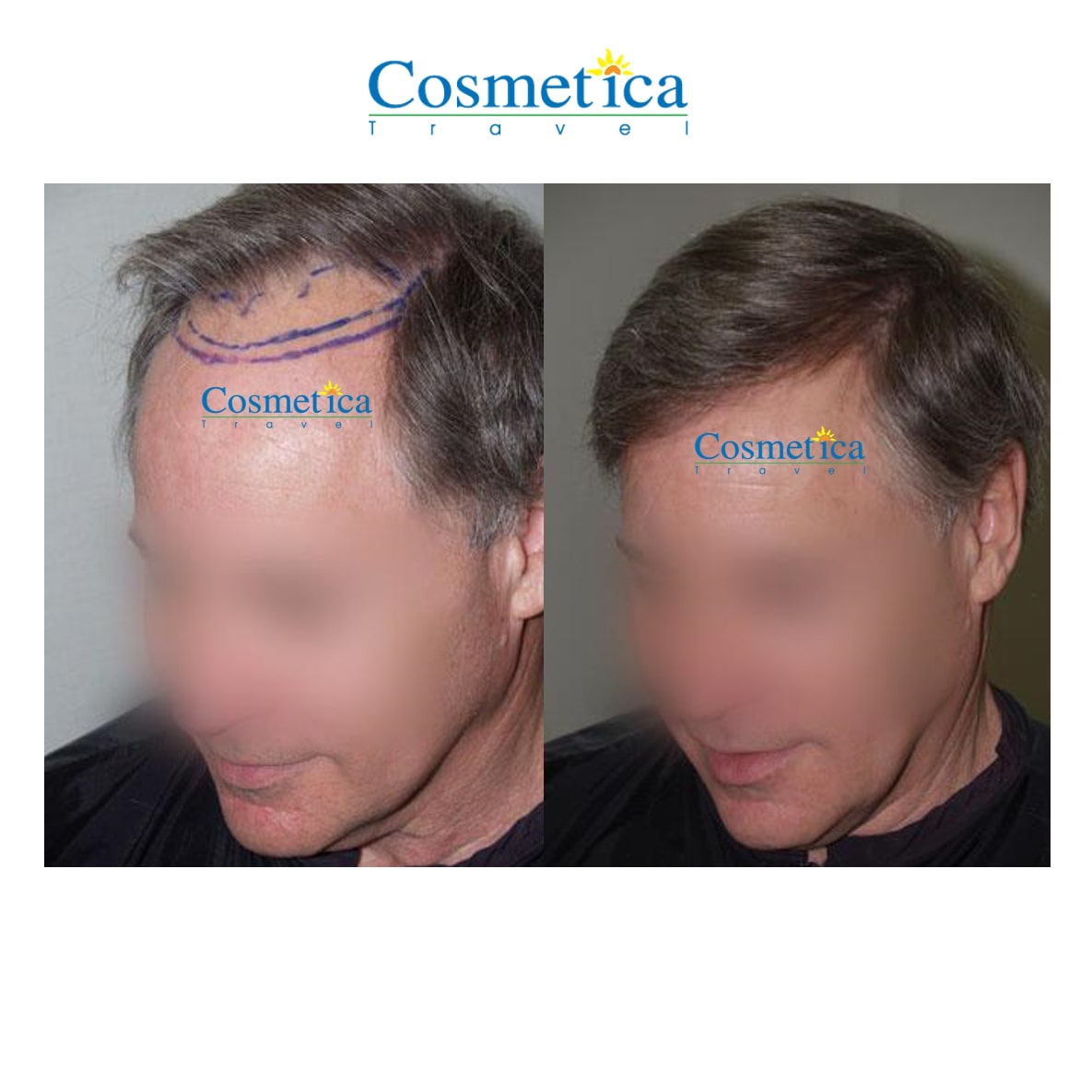What is hair transplantation?
In a world where beauty standards are defined by fullness and thickness, baldness can be a source of insecurity for many people. Mostly caused by aging, or else genetics, going bald is a condition from which aged people suffer the most. Therefore, hair replacement surgery was introduced to give hairless people naturally looking hair.
Hair transplantation is a surgical procedure that aims at restoring hair through its redistribution from hairy to hairless areas of the head.
Techniques of hair replacement surgery
Although new techniques of hair implanting have emerged, the most commonly used ones are Follicular Unit Extraction (FUE), and Follicular Unit Transplantation (FUT). Both methods have the same aims ─that of transplanting hair into hairless sites─ yet, proceed differently.
- Follicular Unit Extraction (FUE): this method is used on patients who suffer from alopecia, beard loss, or also eyebrow and eyelash loss. It consists of extracting a small number of hair follicles from rich sites of the head (also known as donor areas).
- Follicular Unit Transplantation (FUT): it is also known as the strip procedure. The method extracts large grafts from donor sites and transplants them directly into hairless areas of the head.
Good candidates for hair implanting
Good candidates for a hair replacement surgery are people who suffer from hair loss in any area of their body (be it the head, eyebrows, beard, eyelashes, chest) In addition, good candidacy is defined in terms of good health, healthy lifestyle, and hair care and maintenance.
How much is a hair transplant in Tunisia?
The cost of hair transplantation in Tunisia with Cosmetica Travel is 70% lesser than in the United Kingdom.
| Operations | Our price | UK price | Making you save |
|---|
- The average pricing in the United Kingdom is £ ; solely including anaesthesia, operating room facilities, and surgeon’s fees.
- The cost of hair transplantation in Tunisia is £ ; all-inclusive with a recovery stay at a five-star hotel, a chance to explore our exotic Tunisia, and a dedicated assistance team by your side.
It is all the same important to note that the low prices of plastic surgery in Tunisia are due to the cheaper cost of living, the currency exchange rate, tax laws, and lower insurance cost payment on the part of Tunisian doctors.
Hair replacement surgery in Tunisia
| Operations | Anaesthetic | Procedure Time | Hospital Stay | Stay In Tunisia | Back To Work | All Inclusive Price |
|---|
How is hair transplantation done?
Before hair transplantation:
During the initial consultation, the cosmetic surgeon will conduct a complete medical check-up and a hair examination. The surgeon will also review the patient’s medical history to check any contraindications to the hair implants. Finally, the surgeon has to make sure that their patient has set realistic expectations for themselves.
During hair implant procedure:
The method of hair implant to perform depends on a number of criteria like the patient’s medical case, hair quality, desired outcome, hair colour, size of the recipient site, etc.
- Follicular Unit Transplantation (FUT):
The method of Follicular Unit Extraction (FUE) is performed on an outpatient basis under general anaesthesia. It lasts for two to three hours depending on the number of hairs to implant.
The procedure involves removing pieces of the scalp (usually from hairy sites like the back of the head) and dividing them into hair grafts. Using a needle, the surgeon will mark the holes in which the hair follicles will be transplanted. These marks are made in the recipient site; generally affected by hair loss. Once grating is completed, the surgeon will place a bandage on the operated areas of the head and close the cut of extraction with resorbable stitches.
After a few months of surgery, the patient will notice their new hair growing. Results will refine to thicker and natural-looking hair starting from the fifth month.
- Follicular Unit Extraction (FUE):
The method of Follicular Unit Transplantation (FUT) is performed on an outpatient basis under general anaesthesia. It lasts for four to ten hours depending on the treated area(s).
The procedure involves extracting individual hair follicles from the donor area to implant them in hairless sites. The hair follicles are generally extracted from the back of the head. The surgeon will mark a number of holes on the scalp, and hair follicles will be carefully transplanted in them. The surgeon concludes the procedure by placing a bandage. It is believed that Follicular Unit Extraction (FUE) leaves minimal post-surgical scarring.
After three months, new hair will start to grow, by one centimeter each month.
Post-operative effects & recovery after hair transplantation:
The patient has to wear the bandage for a few days until the scalp heals. Although hair transplantation is a relatively painless procedure, the surgeon will prescribe painkillers in case of discomfort or pain. One to two weeks off work are necessary to rest. The surgeon prohibits physical activity of any kind during four weeks after the hair implant procedure. In addition, the patient should beware of exposing the operated area to water. Hair washing is recommended after three days of the procedure, but the patient has to use a gentle towel and let it dry completely in the open air.
Results of hair transplantation:
The hair transplantation results will take three months to one year to be visible. Hair growth will start after three months of the surgery, but complete hair restoration will occur after a year.
Before after photos of a hair transplant:


